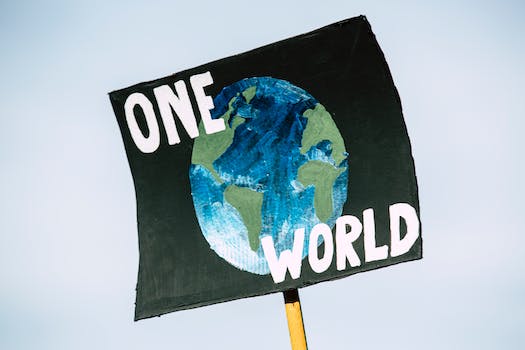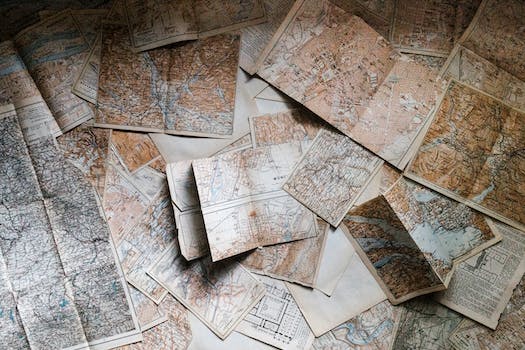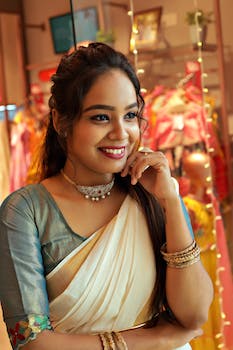

-
Table of Contents
Traditional vs. Modern Art: A Comparative Journey - Exploring the Evolution of Expression.
Introduction
Traditional vs. Modern Art: A Comparative Journey
Art has been an integral part of human civilization for centuries, serving as a medium of expression, reflection, and cultural representation. Over time, the art world has witnessed significant shifts and transformations, leading to the emergence of two distinct periods: traditional and modern art. This comparative journey aims to explore the characteristics, techniques, and ideologies that differentiate traditional art from its modern counterpart. By delving into the historical context and examining the evolution of artistic styles, we can gain a deeper understanding of the contrasting approaches and influences that have shaped the art world throughout history.
The Evolution of Art: Traditional vs. Modern Approaches
The world of art has undergone a remarkable transformation over the centuries. From the traditional approaches of the past to the modern techniques of today, the evolution of art has been a fascinating journey. Traditional art, rooted in history and culture, has long been revered for its technical skill and adherence to established norms. On the other hand, modern art, with its emphasis on innovation and experimentation, has challenged these conventions and pushed the boundaries of what is considered art.
Traditional art, often associated with the Renaissance and Baroque periods, was characterized by its realistic depictions of the world. Artists such as Leonardo da Vinci and Michelangelo sought to capture the beauty of nature and the human form with meticulous detail. Their works, often commissioned by wealthy patrons, were meant to be admired for their technical mastery and adherence to classical principles. Traditional art was seen as a reflection of the society in which it was created, with religious and mythological themes dominating the subject matter.
In contrast, modern art emerged in the late 19th and early 20th centuries as a response to the changing world. Artists such as Pablo Picasso and Wassily Kandinsky rejected the traditional notions of representation and instead focused on expressing their inner emotions and ideas. The advent of photography also played a significant role in the development of modern art, as artists no longer felt the need to create realistic images. Instead, they sought to capture the essence of a subject or convey a particular mood or feeling.
One of the key differences between traditional and modern art lies in their respective approaches to technique. Traditional art places a strong emphasis on technical skill and craftsmanship. Artists spend years honing their abilities, mastering the use of color, composition, and perspective. The result is often a highly polished and realistic image that is visually stunning. In contrast, modern art values the concept or idea behind the artwork more than the technical execution. Artists may use unconventional materials or techniques to create their works, often challenging the viewer's perception of what art can be.
Another distinguishing factor between traditional and modern art is the role of the artist in society. In traditional art, the artist is often seen as a skilled craftsman, working within the confines of established norms and traditions. Their works are meant to be admired and appreciated for their technical prowess. In contrast, modern artists are often seen as visionaries and provocateurs, pushing the boundaries of what is considered art. They seek to challenge the viewer's preconceived notions and provoke a reaction, whether it be awe, confusion, or even outrage.
While traditional art and modern art may seem worlds apart, they are both important and valid forms of artistic expression. Traditional art provides a window into the past, allowing us to appreciate the skill and craftsmanship of artists who came before us. Modern art, on the other hand, challenges us to think differently and question the status quo. It pushes the boundaries of what is considered art and encourages us to see the world in new and unexpected ways.
In conclusion, the evolution of art from traditional to modern approaches has been a fascinating journey. Traditional art, with its emphasis on technical skill and adherence to established norms, has long been revered for its beauty and craftsmanship. Modern art, on the other hand, challenges these conventions and pushes the boundaries of what is considered art. Both forms of artistic expression have their merits and contribute to the rich tapestry of human creativity. Whether we prefer the classical beauty of traditional art or the bold experimentation of modern art, there is no denying the power and impact of both.
Exploring the Influence of Technology on Traditional and Modern Art

Exploring the Influence of Technology on Traditional and Modern Art
Art has always been a reflection of the society in which it is created. Throughout history, artists have used various mediums and techniques to express their ideas and emotions. However, with the advent of technology, the art world has undergone a significant transformation. This article aims to explore the influence of technology on both traditional and modern art, highlighting the ways in which it has shaped and redefined artistic expression.
One of the most noticeable impacts of technology on art is the shift from traditional to digital mediums. In the past, artists relied on physical materials such as canvas, paint, and clay to create their masterpieces. However, with the rise of digital tools and software, artists now have the ability to create art using computers and other electronic devices. This has opened up a whole new world of possibilities, allowing artists to experiment with different techniques and styles that were previously unimaginable.
The accessibility of technology has also democratized the art world. In the past, only a select few had the means and resources to pursue a career in art. However, with the rise of digital platforms and social media, artists can now showcase their work to a global audience with just a few clicks. This has not only given emerging artists a platform to gain recognition but has also allowed art enthusiasts from all walks of life to engage with and appreciate art in a way that was once reserved for the elite.
Furthermore, technology has revolutionized the way art is consumed and experienced. Museums and galleries are no longer the sole spaces for art appreciation. Virtual reality and augmented reality technologies have made it possible for people to immerse themselves in art from the comfort of their own homes. This has not only made art more accessible but has also allowed for a more interactive and engaging experience. Visitors can now explore virtual exhibitions, interact with artworks, and even create their own virtual galleries.
However, while technology has undoubtedly brought about many positive changes, it has also raised questions about the authenticity and value of art. With the rise of digital art, the concept of the original artwork has become blurred. Unlike traditional art, which is unique and tangible, digital art can be easily reproduced and shared. This has led to debates about the ownership and copyright of digital artworks, as well as the role of the artist in the digital age.
In conclusion, technology has had a profound impact on both traditional and modern art. It has expanded the possibilities for artistic expression, democratized the art world, and revolutionized the way art is consumed and experienced. However, it has also raised questions about the authenticity and value of art in the digital age. As technology continues to evolve, it will be interesting to see how artists and art enthusiasts adapt and embrace these changes, and how they will shape the future of art.
Traditional vs. Modern Art: Examining Cultural Perspectives and Interpretations
Traditional vs. Modern Art: A Comparative Journey
Art has always been a reflection of the society in which it is created. Throughout history, artists have used their work to express their thoughts, emotions, and beliefs. As time has passed, the art world has evolved, giving rise to different movements and styles. Two of the most prominent categories in this evolution are traditional and modern art. While both forms of art have their own unique characteristics, they also share commonalities that make them integral parts of our cultural heritage.
Traditional art, as the name suggests, refers to the art forms that have been practiced for centuries. It encompasses a wide range of styles, including classical, Renaissance, and Baroque. Traditional art often focuses on realistic depictions of subjects, with an emphasis on technical skill and craftsmanship. It is deeply rooted in cultural traditions and often draws inspiration from religious or mythological themes.
On the other hand, modern art emerged in the late 19th century as a response to the changing world. It rejected the conventions of traditional art and sought to break free from the constraints of realism. Modern art encompasses various movements, such as Impressionism, Cubism, and Abstract Expressionism. It is characterized by experimentation, innovation, and a departure from traditional subject matter and techniques.
One of the key differences between traditional and modern art lies in their cultural perspectives and interpretations. Traditional art is often seen as a reflection of the values, beliefs, and customs of a particular society. It provides a window into the past, allowing us to understand the cultural context in which it was created. For example, the religious themes prevalent in traditional art reveal the importance of spirituality in the lives of people during that time.
In contrast, modern art challenges traditional norms and seeks to provoke thought and emotion. It often addresses contemporary issues and reflects the changing social, political, and cultural landscapes. Artists like Pablo Picasso and Salvador Dali used their work to express their views on war, sexuality, and the human condition. Modern art encourages viewers to question established ideas and explore new perspectives.
Despite their differences, traditional and modern art also share commonalities that make them equally important. Both forms of art have the power to evoke emotions and spark conversations. They serve as a means of communication, allowing artists to express their thoughts and viewers to engage with the artwork on a personal level. Whether it is a classical painting or a contemporary installation, art has the ability to transcend time and connect people across generations.
Furthermore, traditional and modern art often influence and inspire each other. Many modern artists draw inspiration from the techniques and subject matter of traditional art. They build upon the foundations laid by their predecessors, pushing the boundaries of creativity and innovation. Similarly, traditional artists are not immune to the influence of modern art. They incorporate new techniques and ideas into their work, breathing new life into traditional art forms.
In conclusion, traditional and modern art are two distinct categories that have shaped the art world throughout history. While traditional art is rooted in cultural traditions and focuses on realism, modern art challenges conventions and explores new possibilities. Both forms of art offer unique perspectives and interpretations, reflecting the society in which they were created. By appreciating and understanding the differences and similarities between traditional and modern art, we can gain a deeper appreciation for the rich tapestry of human creativity.
Q&A
1. What are the main characteristics of traditional art?
Traditional art is often characterized by realistic representations, adherence to established artistic techniques and styles, and a focus on portraying religious, historical, or mythological themes.
2. What are the main characteristics of modern art?
Modern art is characterized by a departure from traditional artistic conventions, experimentation with new materials and techniques, abstraction, and a focus on individual expression and subjective interpretations.
3. How do traditional and modern art differ in terms of subject matter?
Traditional art often focuses on religious, historical, or mythological subjects, while modern art explores a wider range of themes, including social issues, personal experiences, and abstract concepts.
Conclusion
In conclusion, the comparison between traditional and modern art reveals significant differences in terms of style, technique, subject matter, and audience reception. Traditional art emphasizes realism, classical themes, and technical mastery, while modern art embraces experimentation, abstraction, and conceptual ideas. Both forms of art have their own merits and contribute to the rich tapestry of artistic expression throughout history. Ultimately, the choice between traditional and modern art is subjective and depends on individual preferences and interpretations.










